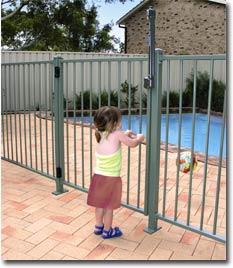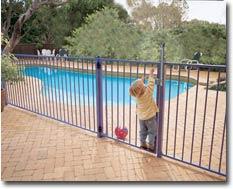September 30, 2016 LAYERS OF PROTECTION FOR CLASS C PUBLIC SWIMMING POOLS
“Layers of Protection” have been advocated over the years by such organizations as the Consumer Product Safety Commission (CPSC); the Centers for Disease Control (CDC); the National Spa and Pool Institute (NSPI); National Safe Kids; the National Drowning Prevention Alliance (NDPA); and the American Academy of Petriatrics (AAP). However, these advocacies are usually intended for residential pool owners and parents and very seldom address the lodging industry to include hotels, motels, apartment complexes, etc.
by Gerald M. Dworkin
June 2004


According to the National Spa & Pool Institute (NSPI), a commercial/public pool is defined as “any pool, other than a residential pool, that is intended to be used for swimming or bathing and is operated by an owner, lessee, operator, licensee, or concessionaire, regardless of whether a fee is charged for use.” Commercial/public pools, according to the NSPI, are further classified and defined as follows:
Class A, Competition Pool: Any pool intended for use for accredited competitive aquatic events. The use of the pool is not limited to competitive events.
Class B, Public Pool: Any pool intended for public recreational use.
Class C, Semi-Public Pool: Any pool operated solely for and in conjunction with lodgings such as hotels, motels, apartments, condominiums, etc.
Class D, Other Pool: Any pool operated for medical treatment, therapy, exercise, lap swimming, recreational play, and other special purposes, including, but not limited to, wave or surf action pools, activity pools, splasher pools, kiddy pools, and play areas.
“Layers of Protection” have been advocated over the years by such organizations as the Consumer Product Safety Commission (CPSC); the Centers for Disease Control (CDC); the National Spa and Pool Institute (NSPI); National Safe Kids; the National Drowning Prevention Alliance (NDPA); and the American Academy of Petriatrics (AAP). However, these advocacies are usually intended for residential pool owners and parents and very seldom address the lodging industry to include hotels, motels, apartment complexes, etc.
The NSPI published the Professional Pool & Spa Operator Manual in 2003 for use within the NSPI Professional Pool & Spa Operator Program, which provides training and certification of commercial swimming pool and spa managers, operators, engineers, service company professionals, and facility owners. However, within their course manual and curriculum, they failed to appropriately advocate the development of and implementation of acceptable layers of protection for Class C public pools.
Therefore, the following are those layers of protection which Lifesaving Resources advocates for “unguarded” public pools:
- Adequate and effective adult supervision;
- Self-closing, self-latching and self-locking gates and/or access doors that require keyed-entry;
- Gates and/or access doors that open outward, away from the pool area; Colored depth lines differentiating the shallow from the deep ends of the pool;
- Depth markers on the decks and vertical walls of the pools;
- “No Diving” signs prominently displayed around the pools in areas less than 9 feet deep;
- Warning signs to advocate the need to vigilantly supervise children at all times when they are in, on, and around the water;
- Window locks on access windows allowing access to the pool area;
- Alarms on doors and windows leading into the pool area;
- Adequate and effective deck and underwater lighting;
- Pool safe covers when the pool is closed; and,
- Passive monitoring systems
In addition, Group-Use Policies need to be developed that mandage appropriate adult supervision, and that provide guidelines for safely and effectively supervising children while they are in or around the water.
We do not advocate Lifeguards for Class C Public Swimming Pools for a variety of reasons. The demand for Lifeguards far outweighs the supply available for municipal and other Class A and B public swimming pools. To mandate Lifeguards for Class C pools would result in unsafe staffing practices at all pools and would result in the closure of many public pools. However, if Class C pools are allowed to operate without implementing Layers of Protection, then Lifeguards should be trained and positioned and required in order to safeguard the public who use these pools.


